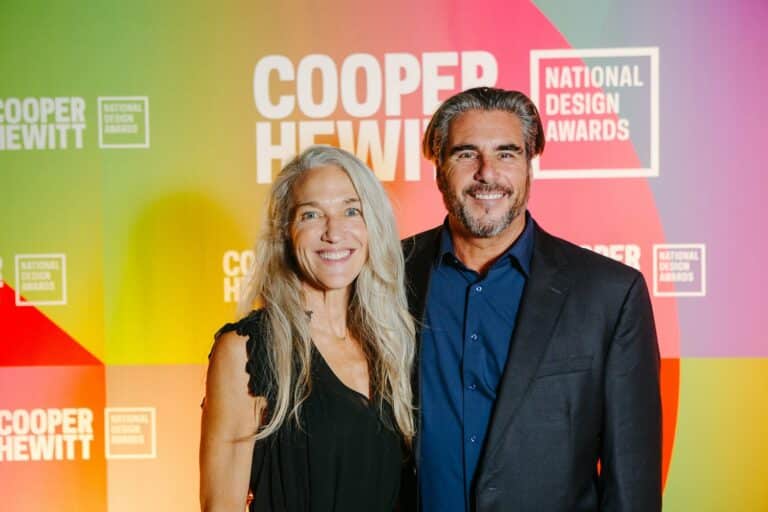
With climate change accelerating, drought is becoming the norm in the west as our rivers, aquifers, and reservoirs dry up; we need not only to take water conservation seriously, but to start looking at alternative sources of water. The mobile water generator being developed by David Hertz and Laura Doss-Hertz’s Skysource company produces fresh drinking water via a novel source: air.
David and Laura split their time between the western hills of Malibu on a property called Xanabu and their Paradise Cove mobile home park “surf shack.” Both are lifelong surfers. David is a third-generation Malibu native — his grandfather and father built the western town at Paramount Ranch (which is now being rebuilt after the Woolsey Fire).
He’s also a well-known architect in the local area with 40 years of experience building sustainable and fire-resilient buildings. “Buildings that give back more than they take,” as he explains it. He designed the famous 747 Wing House in Malibu using the wings of an out-of-commission 747 airplane to “address radical reuse and repurposing.” He also designed the recently completed Natural Resource Defense Council (NRDC) facility in Santa Monica.
David’s invention, the WEDEW (Wood to Energy Deployable Emergency Water) is a mobile self-contained system that generates fresh drinking water from the air. It does this by converting wood (or any biomass like grass, walnut and pistachio shells, dead trees, or brush) through a process known as “biomass gasification.” The plant material fed into the system is superheated into water vapor, which is then condensed into drinking water.
The system’s smaller unit can consume as much as 50 pounds of plant materials per hour and the larger unit over 2,000 pounds per hour.
Two other byproducts useful to humans are also generated in the process: electrical power and “biochar” (charred plant material that can be used as fertilizer, compost, a water filter, or even graphene).
The entire system, made up of one-quarter-size shipping containers, includes not only the water pod, but options for a battery storage pod, an indoor growing pod, and a refrigeration module. It all fits into a single 40-foot transport container.
A WEDEW unit generates enough electricity to power at 25 kilowatt hours a large house or a small community, and recharges phones and other electronics, in addition to producing 2,000 liters of drinking water every 24 hours at a cost of two cents a liter. As a comparison, customers paying Tier 3 rates to the LA Department of Power & Water now pay about one-quarter cent per liter. So, water from air costs only a fraction more than city water, but significantly less than bottled water (which averages from $1 to $3 per liter). But after a disaster or during a drought or water shortage, it appears to be a good viable alternative to not having any water at all.
Hertz envisions multiple WEDEW units being set up side-by-side in what he calls “Community Climate Resilience Hubs,” where “they’re in a steady state of self-reliance, but in the event of a disaster or drought, can be rapidly deployed to other locations … These will be particularly beneficial in the developing world where competition for resources, especially water, is a threat multiplier with increasing climate change.”
In addition, the biomass gasification process can run 24/7, unlike solar power, and occupies a much smaller area than solar panels. And because biomass fuel is available almost everywhere for free from the leftovers of crop harvesting, forest thinning, brush clearing and natural disasters; it’s cheaper, more sustainable and less harmful to the environment than using diesel generators to power the process.
In 2020, WEDEW and the World Food Program formed a partnership to bring the water generator to a refugee camp in Uganda as well as several communities in Tanzania. The invention has also won a number of prestigious awards over the past four years: this year, the White House Millennium Council gave it the Cooper Hewitt — Smithsonian Design Museum National Design Award. In previous years, it won the Time magazine Best Inventions of 2020, the 2019 Fast Company World Changing Ideas Award, the 2018 World Technology Network World Technology Award, and the 2018 Water Abundance XPRIZE, winning $1.5 million and beating out over 100 teams from 27 countries.
The Resilience Lab, based in Venice Beach, evolved from David’s architectural firm and the couple’s company, Skysource. The Skysource team is made up of a group of architects, engineers, entrepreneurs, university students, and nonprofits, all dedicated to fresh water. Hertz recently created The Resilience Fund with two general partners, investing in emerging climate technologies; and has also formed the nonprofit Resilience Foundation to deploy the WEDEW to communities in need.
“The WEDEW is currently deployed in select rural sites in California on a case study and pilot plant basis, and funded mainly by grants from agencies like the California Energy Commission and Cal Fire,” Hertz wrote in an email. “It’s in an advanced stage of product development. The next step is to test on a larger scale for rapid deployment in a disaster… But we’re still seeking additional funding for advancing the technology and deployment.”
The proposed business model for the project is to offer WEDEW as a , partnering with local nonprofits in an area, to avoid making a community pay upfront for it. Another possible business model is to simply sell the water and power that’s generated for a small profit, which could be shared with the community and/or investors.